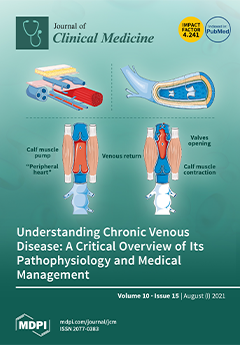Type 2 diabetes mellitus (DM) patients are at a higher risk for developing lung cancer due to immune dysfunction and chronic inflammation. They also have increased morbidity and mortality related to influenza, and it is recommended that they receive an annual influenza vaccination. In this study, we evaluate whether influenza vaccination could reduce the incidence of lung cancer in DM patients. This cohort study included DM patients (≥55 years old) between 1 January 2002 and 31 December 2012 by using the Taiwan Health Insurance Database. Cox proportional hazard regression method was used to compare the relation between the influenza vaccination and lung cancer incidence after adjusting for potential confounders. Sub-group analyses were done according to vaccination status (unvaccinated, total number of vaccinations: 1, 2–3, ≥4) and evaluated the dose-dependent effects on lung cancer events. Among 22,252 eligible DM patients, 7860 (35.32%) received an influenza vaccination and 67.68% (14392) did not receive an influenza vaccination. Lung cancer incidence was significantly lower in the vaccinated group versus the unvaccinated group (adjusted HR 0.77; 95% CI 0.62–0.95,
p < 0.05). Significant protective effects were observed among male sex (adjusted HR 0.72; 95% CI 0.55–0.94,
p < 0.05) and 55–64 year (adjusted HR 0.61; 95% CI 0.40–0.94,
p < 0.05) and ≥75 year (adjusted HR 0.63; 95% CI 0.42–0.92,
p < 0.05) age groups, respectively. A dose-dependent protective effect was noted with a significant protective effect in those that received ≥4 vaccinations (adjusted HR 0.42; 95% CI 0.29–0.61,
p < 0.001). In sub-group analysis, elder patients with ≥65 years of age were significantly protected from ≥4 vaccinations (adjusted HR 0.37; 95% CI 0.23–0.62,
p < 0.001 in 65–74 years and adjusted HR 0.31; 95% CI 0.15–0.66,
p = 0.002 in ≥75 years group, respectively). Male sex with ≥4 vaccinations had a significantly lower risk of lung cancer (adjusted HR 0.35; 95% CI 0.21–0.57,
p < 0.001). Patients with comorbid conditions that received ≥4 vaccinations were also protected, and was especially significant among those with CCI ≥ 3 (adjusted HR 0.38; 95% CI 0.18–0.80,
p = 0.009) as compared to 1 and 2–3 vaccination groups, including those with hypertension (adjusted HR 0.35; 95% CI 0.22–0.57,
p < 0.001). This population-based cohort study demonstrated that annual influenza vaccination significantly reduced the lung cancer risk in DM patients and specifically demonstrates that a higher number of vaccinations is related with a more protective effect. Whether this is due to vaccine booster effects on anti-tumor immune regulation among DM patients still needs to be explored.
Full article






